Working with an automotive brand and creative agency, my role as the Product Designer was to improve the briefing process for Local Markets when they request localised adaptations for master ads.
Briefing is causing a lot of issues between the Local Markets and the Delivery Team. By addressing this issue, the aim of this Product is to reduce the cost of time spent on briefing by 20%.
Currently 30% of the ads are created upfront with the remaining 70% being produced on request by local markets. The agency has a vision to increase this number to 90% to minimise the need for briefs being generated. The objective will be to transition the product from being a briefing tool to becoming a one-stop-shop for all marketing ads.
To get a better understanding of the problem, we spoke to 8-10 users. Within the agency, there are three departments;
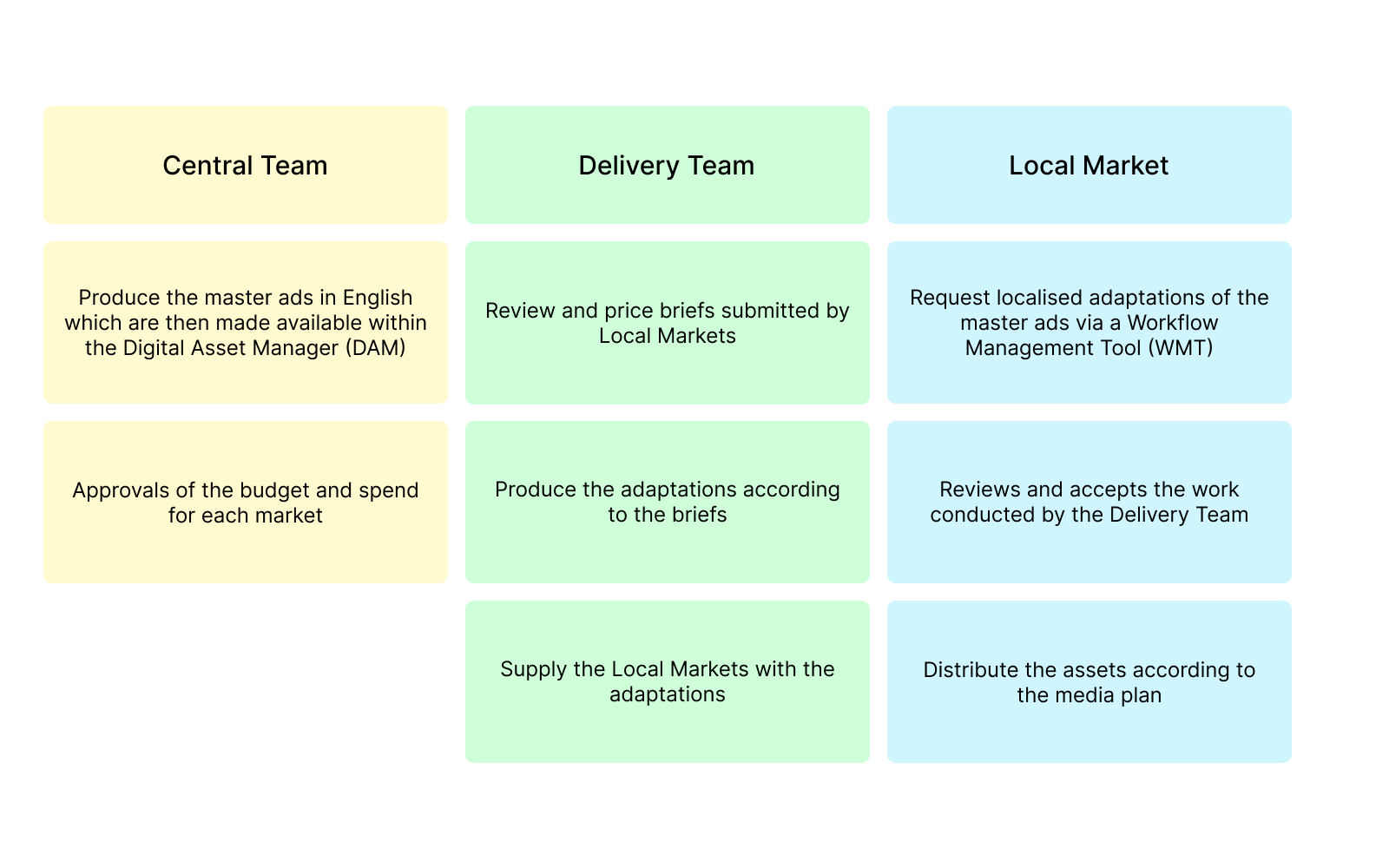
Campaigns are constructed at a global or regional level by the brand. A playbook is created which details how the campaign will be run, the objectives and other relevant information. Once the requirements are defined, the Central Team within the agency will create the master ads. Local Markets are then tasked to request variants of these ads tailored to their market needs which are created by the Delivery Team.
Briefs are created in an inconsistent format
Each market will create a brief in their own way. As the Workflow Management Tool allows for flexibility, users took advantage of this which meant there was no structure for the Delivery Team when they read through a brief. The expected behaviour was for users to complete a form but many of the markets favoured uploading a PDF of the asset they require and annotating it to provide their localised copy and change requests.
Legal copy was overlooked. Adaptations would be created and only once they were being reviewed would this be noticed and would have to go through the process again. As each Market has different requirements for legal copy, it is vital that the Local Market states this within the brief.
Slow approval process
When a Local Market creates a brief, their adaptations need to be created and distributed typically within five days. Once the Delivery Team creates the adaptations, they are expected to upload them into the DAM to enable the Local Markets to download and distribute them to the correct endpoints.
For Assets to be uploaded into the DAM, they must go through an approval process to ensure all metadata and permissions have been applied correctly. The approval process roughly takes two weeks. This is difficult for the Local Markets as they would miss their deadlines. Their solution to this problem is for the Delivery Team to upload the adaptations into the WMT ensuring they are available to the Local Markets immediately.
Asset lifecycle is incomplete
As the agency is not uploading the adaptations into the DAM, key information is lost. Adaptations are not related back to its original Asset losing the linkage between two. Any metadata such as embargo usage and licensing is lost making it difficult to track. Reporting is an issue as there is no data on who is using the Assets and where they are going. This also means the Assets cannot be reused as no other market knows that they have been created and are available which has led to duplicate Assets being created. This has been identified as a major issue and will need to be addressed with the brand and the agency.
Discussions with Tech Strategists
As the brand and agency already use a DAM and WMT, our solution must integrate with these tools. Going forward, we will be working closely with the team to identify any blockers and challenges.
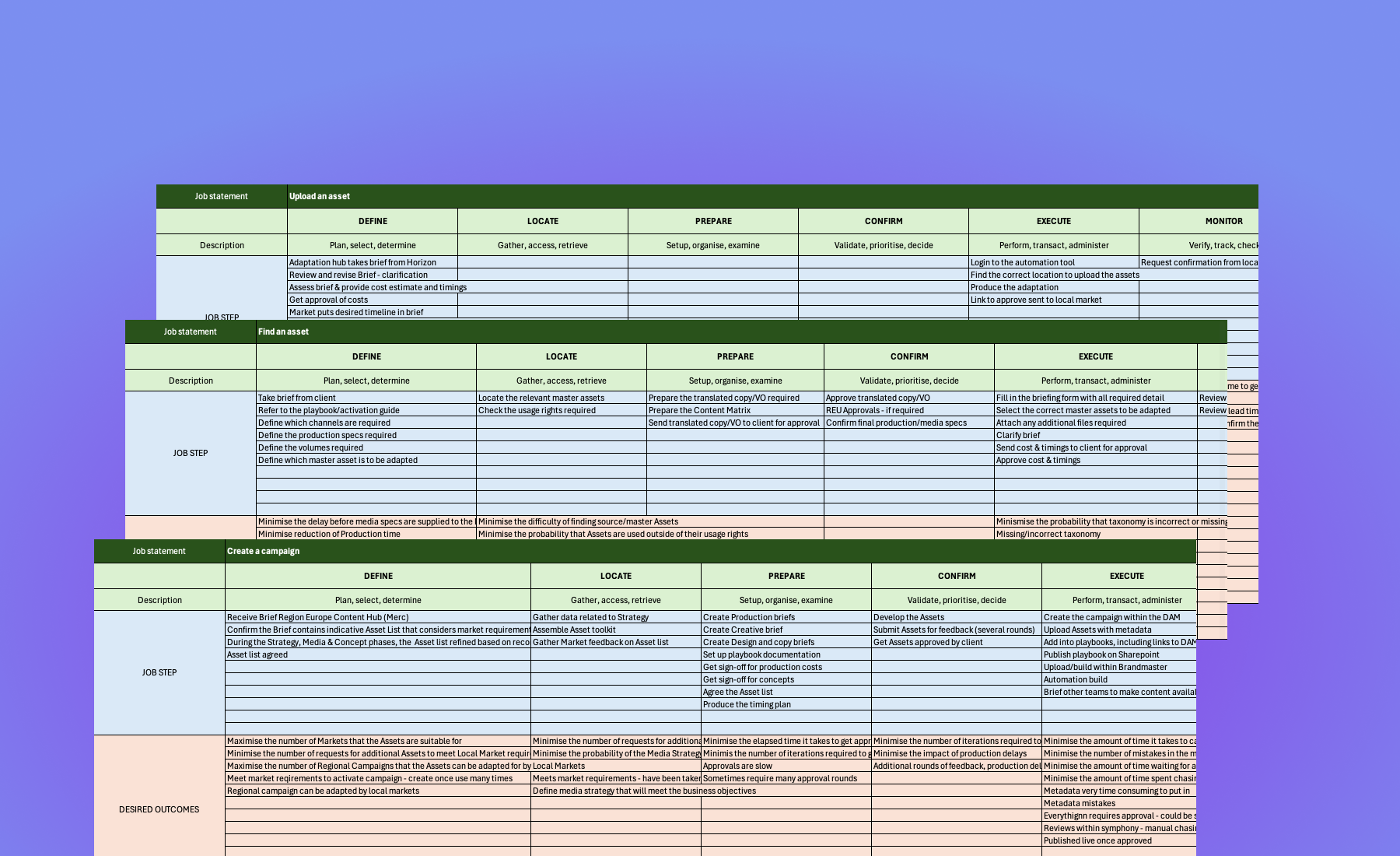
We defined a set of OKRs to validate whether the proposed solution will address the issues discovered.
Objective: Improve the briefing process.
Key Results: The results would be shown via the data we collect for the monthly Adaptation Performance Report and would be measured within the following metrics:
We will also create a survey for the Local Markets and Delivery Team to gather feedback on the updated briefing experience.
Alongside a Product Manager and a Tech Strategist, we identified a set of key functions that were required for the Product to operate successfully. Throughout this phase we were able to conduct weekly feedback sessions with the agency to test concepts and gain rapid feedback.
Integration with the DAM
As the DAM already stores the master assets for each campaign, it was vital we were able to connect to this service. This meant we would reduce any duplicated efforts for creating and storing assets. We created a simplified process where users would “upload” all of the assets for a campaign from the DAM via a URL. This would pull through asset metadata, preview files and thumbnails. Admins have the ability to add, edit and remove any metadata to allow for any further management requirements. In return, this enabled Local Markets to efficiently filter for assets.
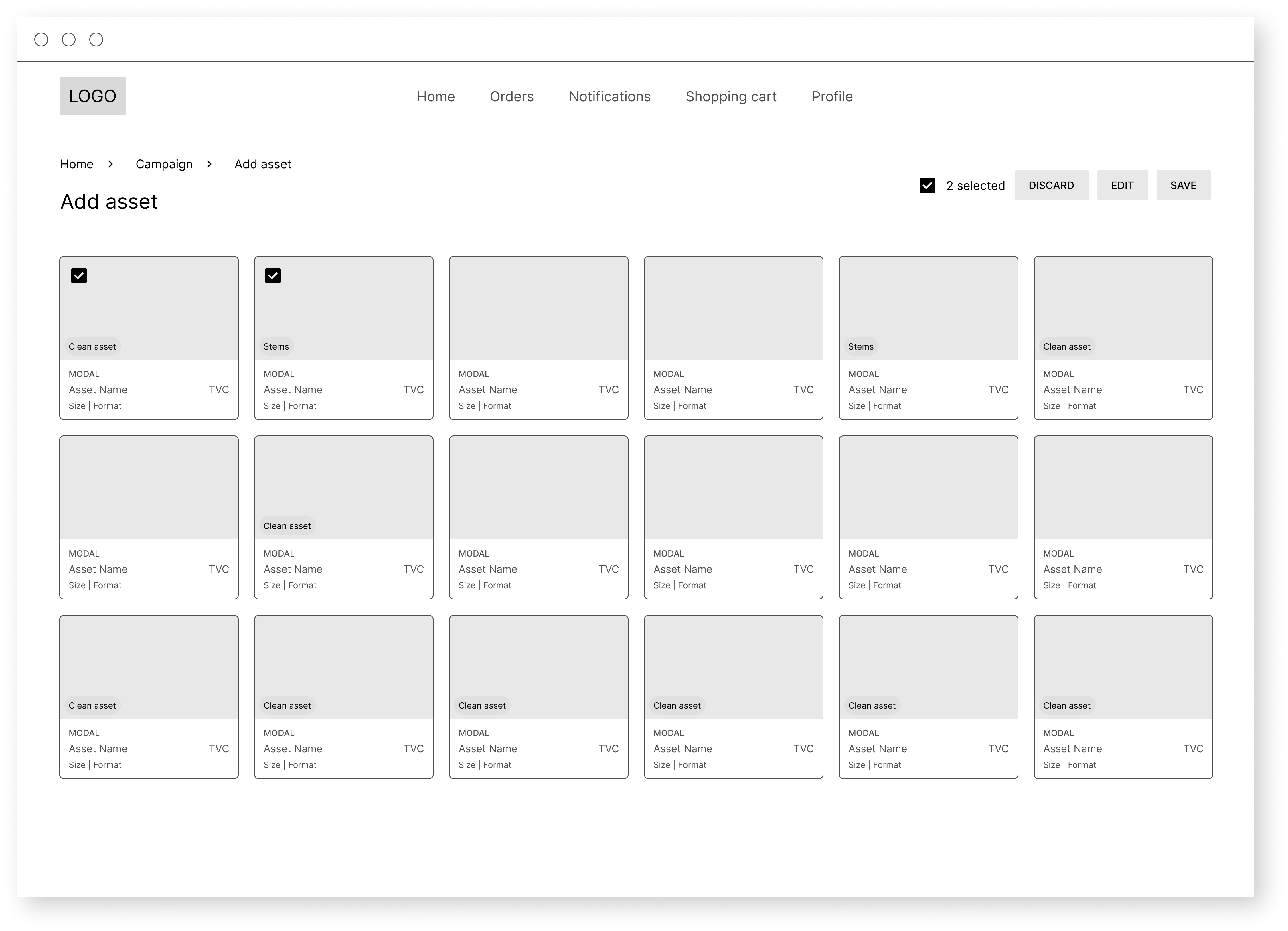
Single source of truth for campaign information
Currently the agency uses many tools to store information about a campaign. The product becomes the hub and the “one-stop-shop” for all information and access to any given campaign. A “playbook” will be created which contains all of the knowledge a user will need to know about a campaign including the audiences, channels destinations and campaign metrics.
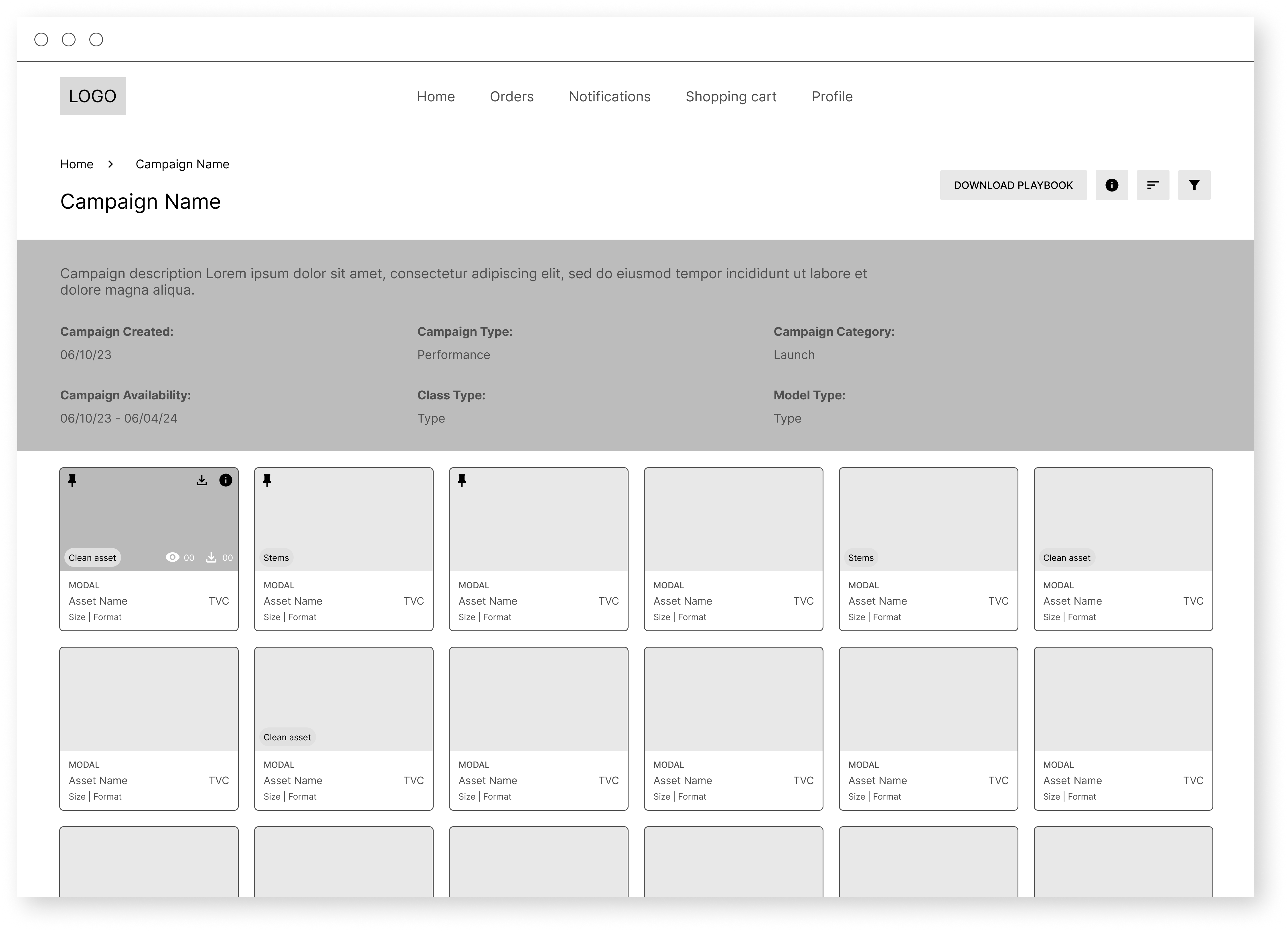
Unified briefing process
Once a user has found an asset they would like to use, they can request an adaptation or if it is already fit for their intended purpose, download it. A preconfigured set of options would be displayed depending on the channel for the user to complete ensuring a brief is fit for purpose. This reduces the margin of error significantly as the form is tailor made. All changes have a set price associated within the system so they are aware of the total cost. Users have the ability to request changes “outside of scope”. The same briefing process will continue but will need to be approved by the Central Team to ensure what is being requested fits within the guidelines.
During our feedback sessions we discovered users frequently focus on creating their briefs based on the channel. We introduced the ability to select multiple assets and create an adaptation request. This would reduce the time spent on creating a request as they could do this in bulk with one form rather than doing so multiple times. We also implemented warnings and feedback to ensure users have proof-read their copy to minimise the errors made.
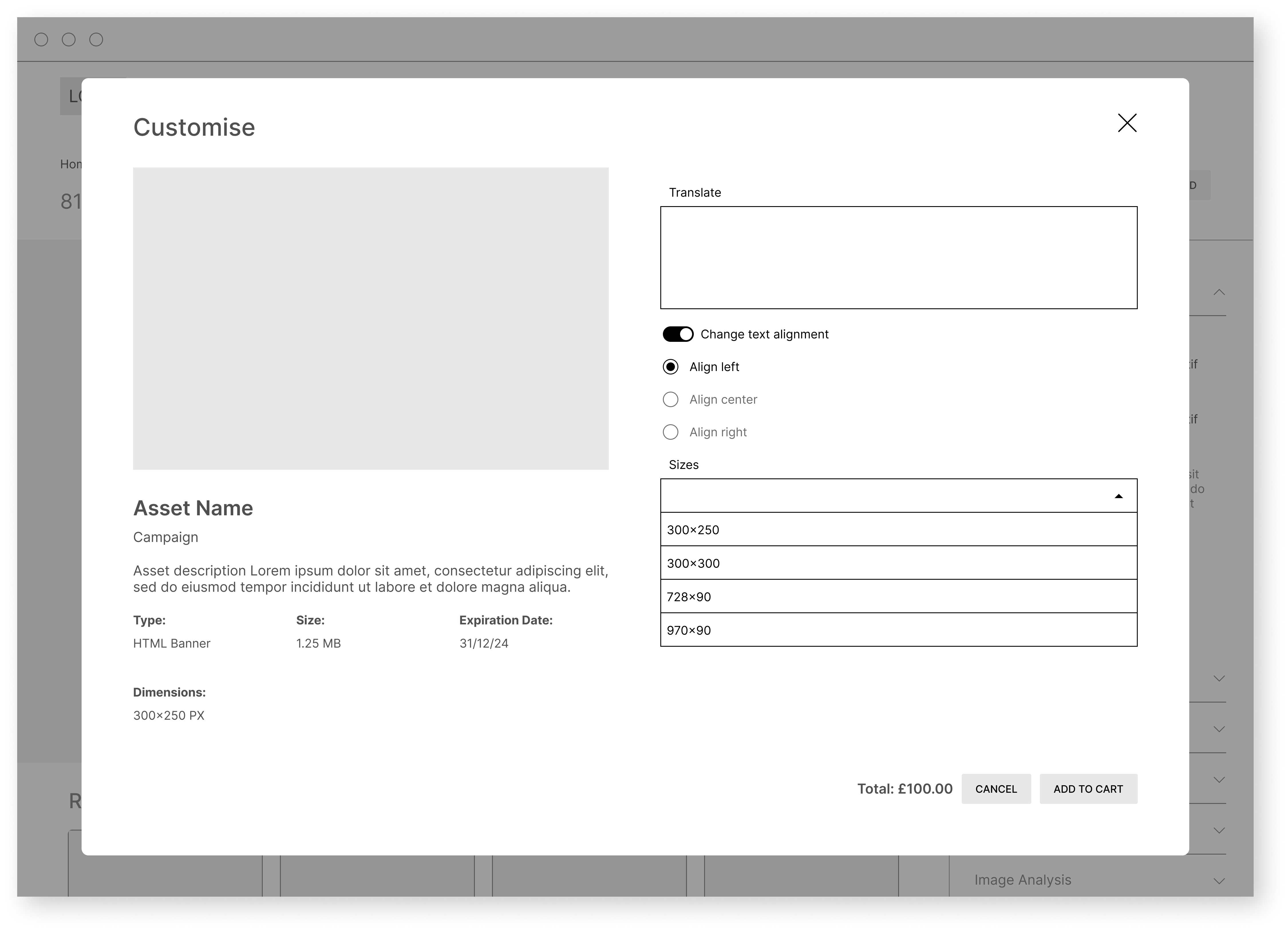
Shopping cart
The shopping cart is the opportunity for users to review and ensure all their adaptations are correct before purchasing the items. As orders have a cost associated with them, the cart represents a familiar concept which users will be aware of.
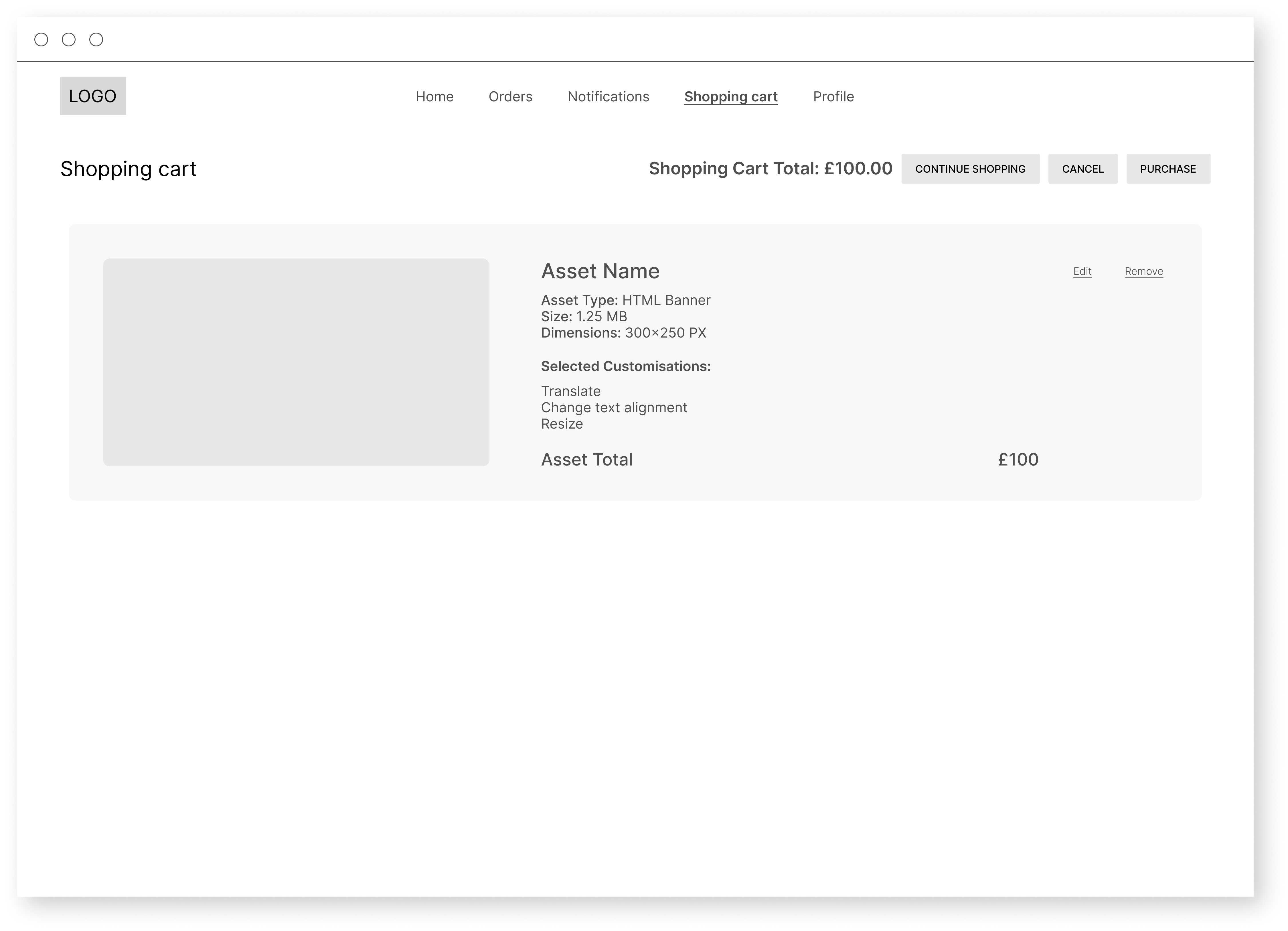
Integration with WMT
Users are no longer required to interact with the WMT as the product will generate a brief once the user “purchases” an order. All feedback and status updates are completed within the product. If an order has been rejected they will have the opportunity to modify and resubmit it.

Having evaluated the issues, our hypothesis was to build a tool whereby briefs are fit for purpose with a high success rate. In order to ensure we are creating value, we decided to build a Proof of Concept. This meant we could build the minimum amount needed at a reduced cost in order to validate that the proposed solution will solve the problems defined.
My contribution to the PoC was to work alongside a Product Manager and Tech Strategist when defining what features will be required and amending wireframes to validate the us. The focus of the PoC was to validate the briefs created by the Local Markets. We decided to focus on using 3-5 recently completed campaigns as we could benchmark the time to complete a brief with the PoC versus the time it actually took to complete a brief when the campaigns were live.
The PoC is currently in development.
